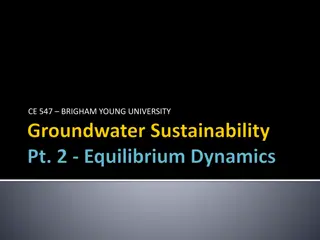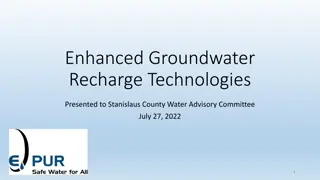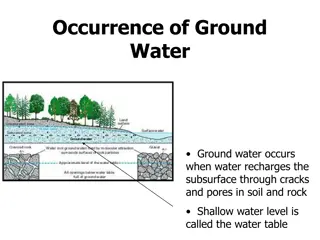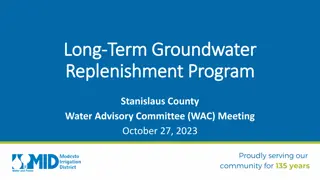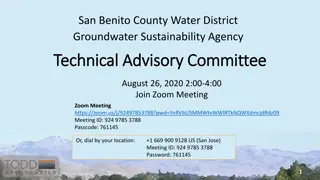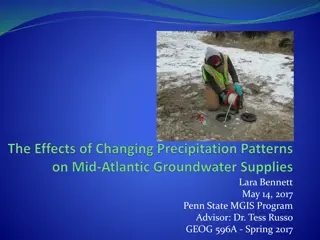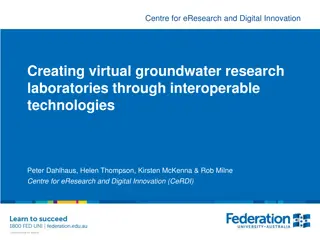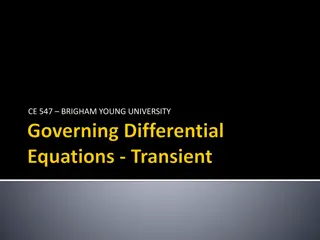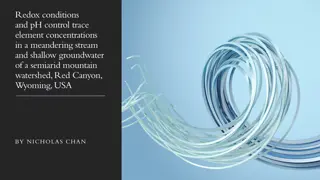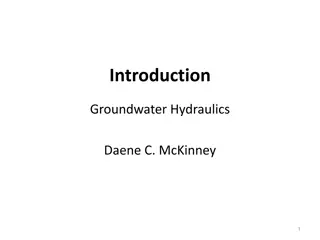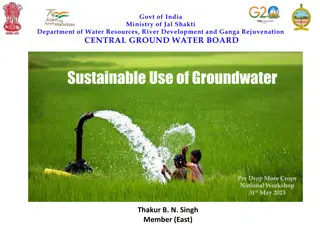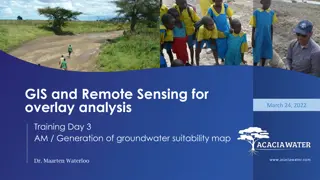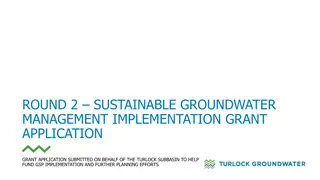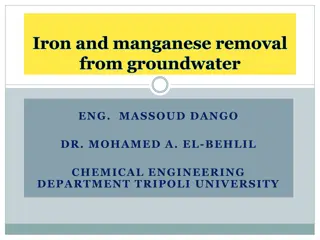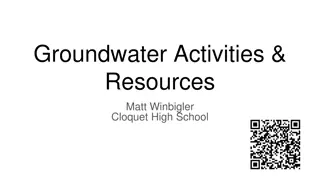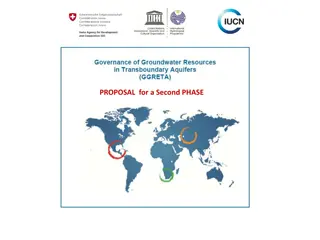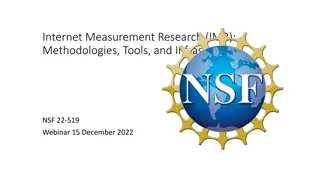Understanding Groundwater Level Measurement Technologies
Groundwater levels are commonly measured using submersible pressure transducers, with data loggers used for monitoring and recording. Different options such as vented vs. non-vented systems, battery voltage considerations, and specifications for pressure sensors are discussed. Additional equipment like telemetries and telemetry-free options are also explored in the context of groundwater applications.
Download Presentation

Please find below an Image/Link to download the presentation.
The content on the website is provided AS IS for your information and personal use only. It may not be sold, licensed, or shared on other websites without obtaining consent from the author. Download presentation by click this link. If you encounter any issues during the download, it is possible that the publisher has removed the file from their server.
E N D
Presentation Transcript
Module Groundwater Level Measurement
Ground Water Concept Continuous ground water levels are most commonly measured with a submersible pressure transducer The measured pressure is converted to water depth over the sensor and from that depth to water from the surface can be calculated
Ground Water Applications External Data Logger Suited towards adding additional equipment to data loggers such as rainfall, evaporation, or other hydromet measurements Internal Data Logger Standalone system for just ground water level recording Internal batteries No solar panels required Additional features such as GPRS and water quality
Ground Water Continued Other options Vented cable compensates for barometric pressure changes Non-vented cable requires post-processing to determine water level
DWLR Options Sensor with Vented Pipe Sensor without Vented Pipe Barometric Pressure correction with different sensor DWLR without Telemetry Just the steel wire and data-logger, no telemetry
Specifications Pressure sensor Sensor Type Vented Gauge Pressure Sensor or Non Vented Pressure Sensor with Barometric Pressure Correction for Individual Sensor *See Explanatory note below the table. Measuring Range 0-50 m (water column) : However, the full scale measuring range and installation depth will be specified by the implementing Agency depending upon their local requirements. Overall Accuracy Temperature Coefficient 0.1% Full Scale or better <0.01% Full scale/degree centigrade for water temperatures between 10 degree centigrade and 40 degree centigrade 0.05% full scale or better. 0.1% Full Scale or better and should ensure long term stability without any field calibration requirements. >3 times Full scale. 2 times full scale or better, without effect on calibration. Over voltage protection should be provided on power supply lines. Reproducibility Long Term Stability Burst pressure Overload pressure Over voltage protection on supply & sensor wires
Data logger 1 mm or better Should be programmed to store data from 1 minute one reading to 24 hours one reading < 30 minutes after submersion. Non-Volatile flash data storage of more than 200000 data points (at least). Non-Volatile Memory Should be equipped with lithium or alkaline battery pack, giving at least 2 years operation .Batteries must be replaceable in the field or in local offices of the Implementing Agency or supplier .Replacement batteries must be easily available in India Resolution of measurement Measuring interval Settling up Time Recording capacity Memory type Power supply Communication Interface The logger must be capable of connection to a computer via USB 2.0 or better and supply should include the necessary interface cables. The logger must be capable of connection to a telemetry system Operating temperature Operating humidity Built in clock Displayed time resolution Over-voltage protection Up to 60 C Up to 100 % Accurate to 1 minute per month 1 second or better Should include lightening, over voltage and surge protection
Enclosure Data logger should be concealed into a single tubular enclosure, which is waterproof and corrosion proof. Enclosure for Pressure sensor and data logger Dimensions Outer diameter : < 75 mm Material Titanium, Stainless Steel or other corrosion resistance material Installation The data logger should be provided with a suspension bracket allowing secure installation within the Piezometers head-works, including appropriate cable mounting to allow the sensor to be adjusted to the required depth, in a stable and reproducible manner. Ambient Condition Up to 600C and 100% humidity
Cable Strength members for good longitudinal stability of cable. Incorporated PTEF or equivalent vent tube for barometric air pressure compensation of the vented gauge pressure sensors (applicable only in case of vented sensor, not applicable for Non- Vented Sensor with barometric correction sensor) A moisture blocking system based on a hydrophobic filter and desiccators, to prevent condensation of water in the vent tube and in the sensor. The desiccant shall be replaceable. (applicable only in case of vented sensor, not applicable for Non-Vented Sensor with barometric correction sensor) The desiccant capacity should be adequate for at least 6 months of unattended operations under the worst environmental conditions. For each instrument, two desiccant replacements should be part of the delivery. (The total desiccant shall be three including the two replacements) (applicable only in case of vented sensor, not applicable for Non-Vented Sensor with barometric correction sensor) The cable and contacts should be fixed or quick connect. Cable should have good flexibility and durability. Should be of Polyurethane Jacket or better The electrical wires shall have sufficient conductivity to allow for extension of the cable to up to 150 mt without degrading accuracy, stability and data communication
Telemetry System Telemetry System GSM/ GPRS/edge based data transmission system with at least two years power backup (see supplementary Specification) Bidder is to acquire, manage, and operate a data collection, storage, processing, and dissemination to support the activities as shown in Annexure-1. The bidder shall arrange cloud server as primary server (meeting requirements given in Annexure-1 (at next page) and a hardware server/storage system for additional backup to be kept with the purchaser The bidder will do Software uploading on server at purchaser s end to receive data from DWLRs and transmit data to website, as a backup to cloud server requested for. Note: A data receiving facility (along with a server, peripherals and other required Operating system, hardware, etc.) shall be purchased separately by the purchaser. DRS cable of 1 meter length capable to connect DWLR with laptop for data receiving. Data Retrieval/Receiving System (DRS) DRS cable


